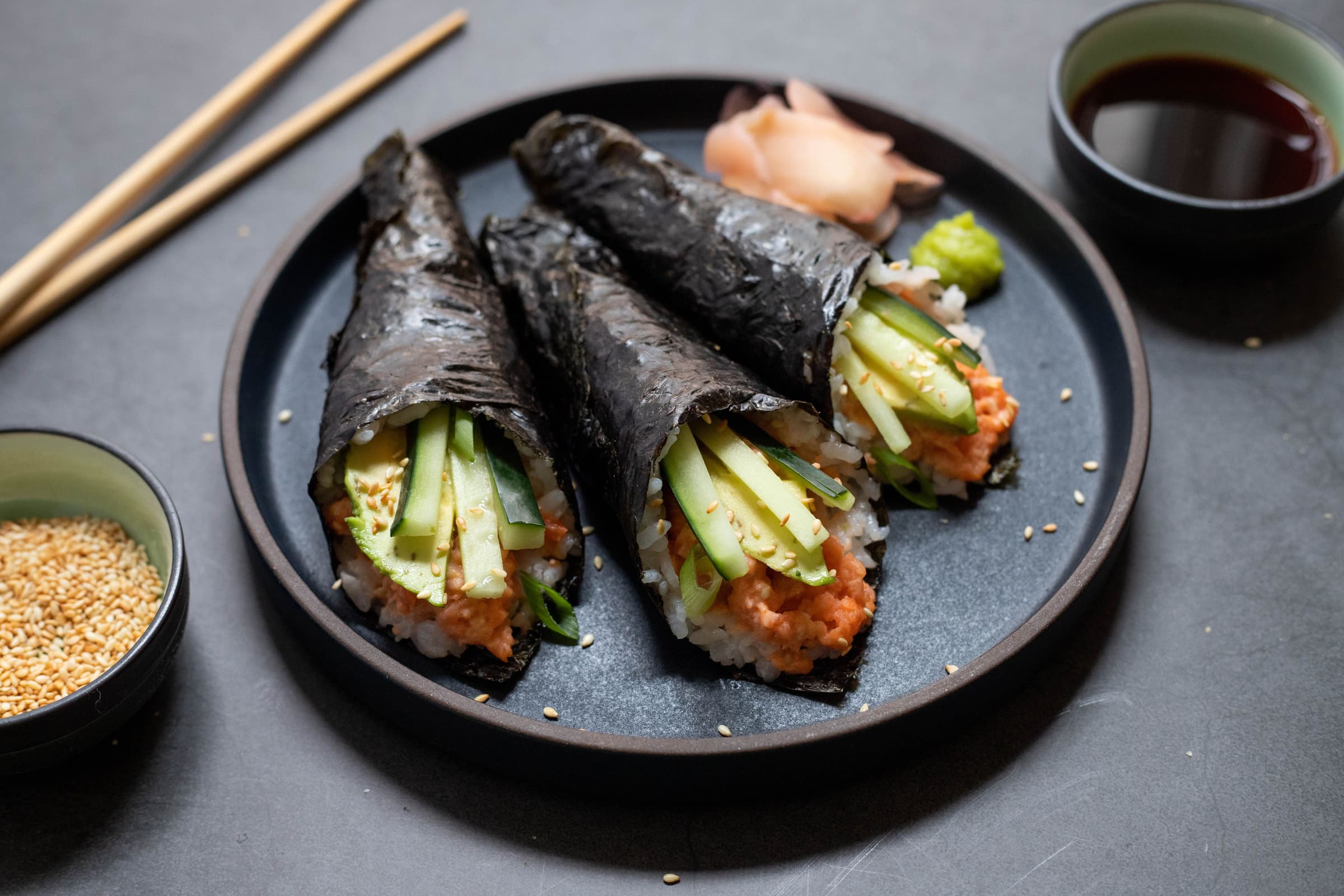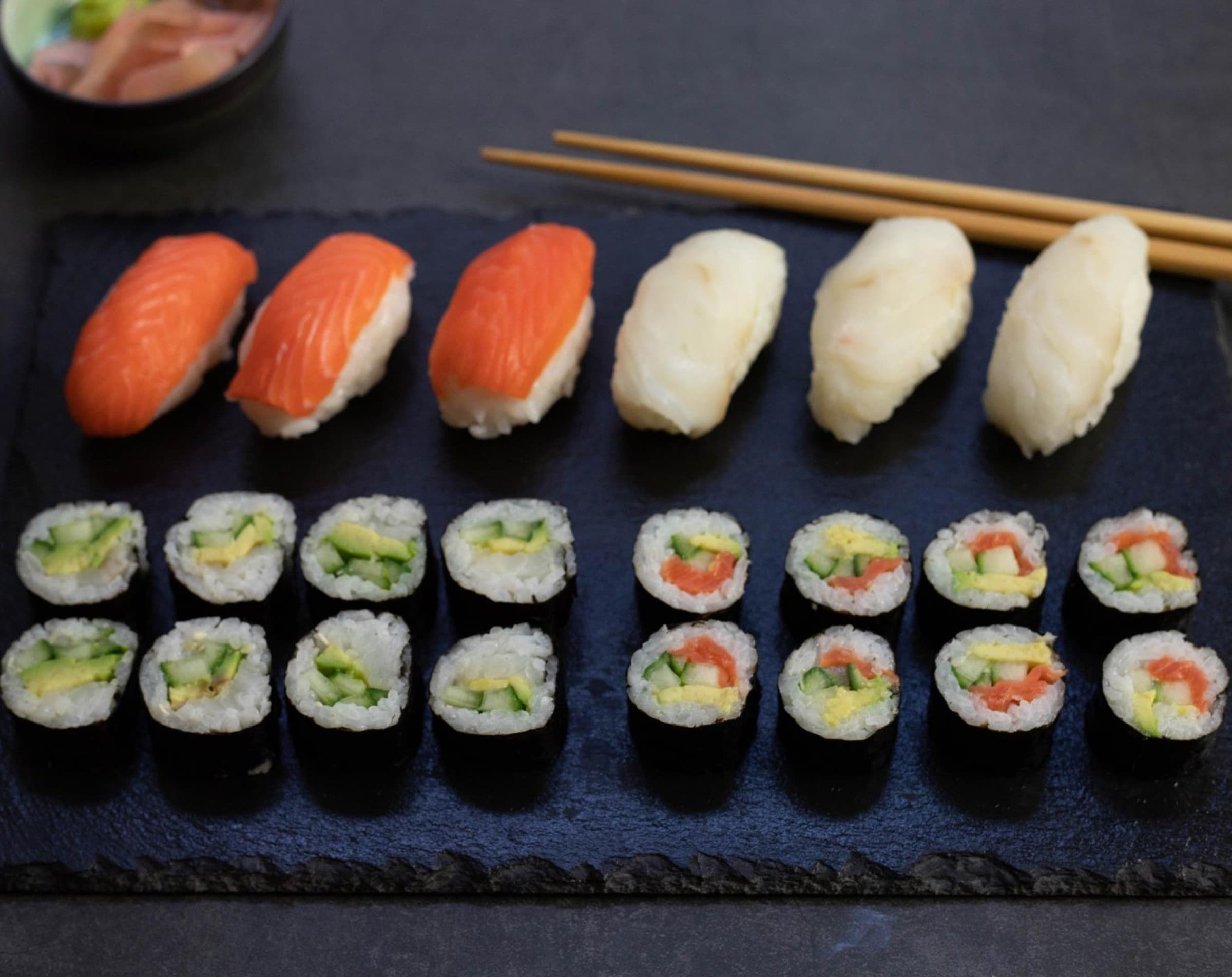What you’ll need
Saucepan for rice
Bamboo sushi mat
Directions
Due to our careful handling process, Sitka Seafood Market seafood is sashimi-grade, so it is safe to eat raw or lightly seared. *See note.
Sushi takes many different forms and some are surprisingly easy. If maki rolls are a bit challenging, try hand rolls (sushi cones), onigiri (rice balls), or onigirazu (folded sushi sandwiches). Easiest of all is chirashi sushi (scattered sushi, tossed together in a bowl).
1. Sushi rice—Japanese short-grain rice—should be thoroughly rinsed before cooking to remove excess starch.
2. Warm, cooked rice is tossed with sweetened rice vinegar which adds flavor and keeps grains from becoming gluey.
3. Nori (seaweed) should be briefly heated over an open flame or in a hot skillet for a few seconds to refresh. Set nori on a bamboo mat, rough side up.
4. Use lightly moistened hands to press rice on nori in an even layer. Press firmly but do not smash the rice.
5. If making maki rolls, add fish and/or other fillings toward the center of the rice. Use the bamboo mat to form the roll into a tight cylinder. Press to seal the roll. Rub the knife with oil for easier slicing.
6. For hand rolls, fill the nori with rice and fish, and roll into a cone.

7. For onigirazu (sushi sandwiches), fill the nori with rice and fish, fold in half, and cut into 2 squares.
8. For onigiri, spread rice on a sheet of plastic wrap. Place fish in the center, then bring up the corners, pinching the rice to cover the filling. Squeeze tightly, then sprinkle with sesame seeds.
*Please note: While our processes and blast-freezing ensure the quality demanded for any fish preparation, we acknowledge there are no official regulations on seafood suitable for raw consumption. The FDA’s stance is that consuming raw or undercooked meat, poultry, and seafood products may increase the risk of foodborne illness. The FDA recommends cooking your seafood to an internal temperature of 145°F.




